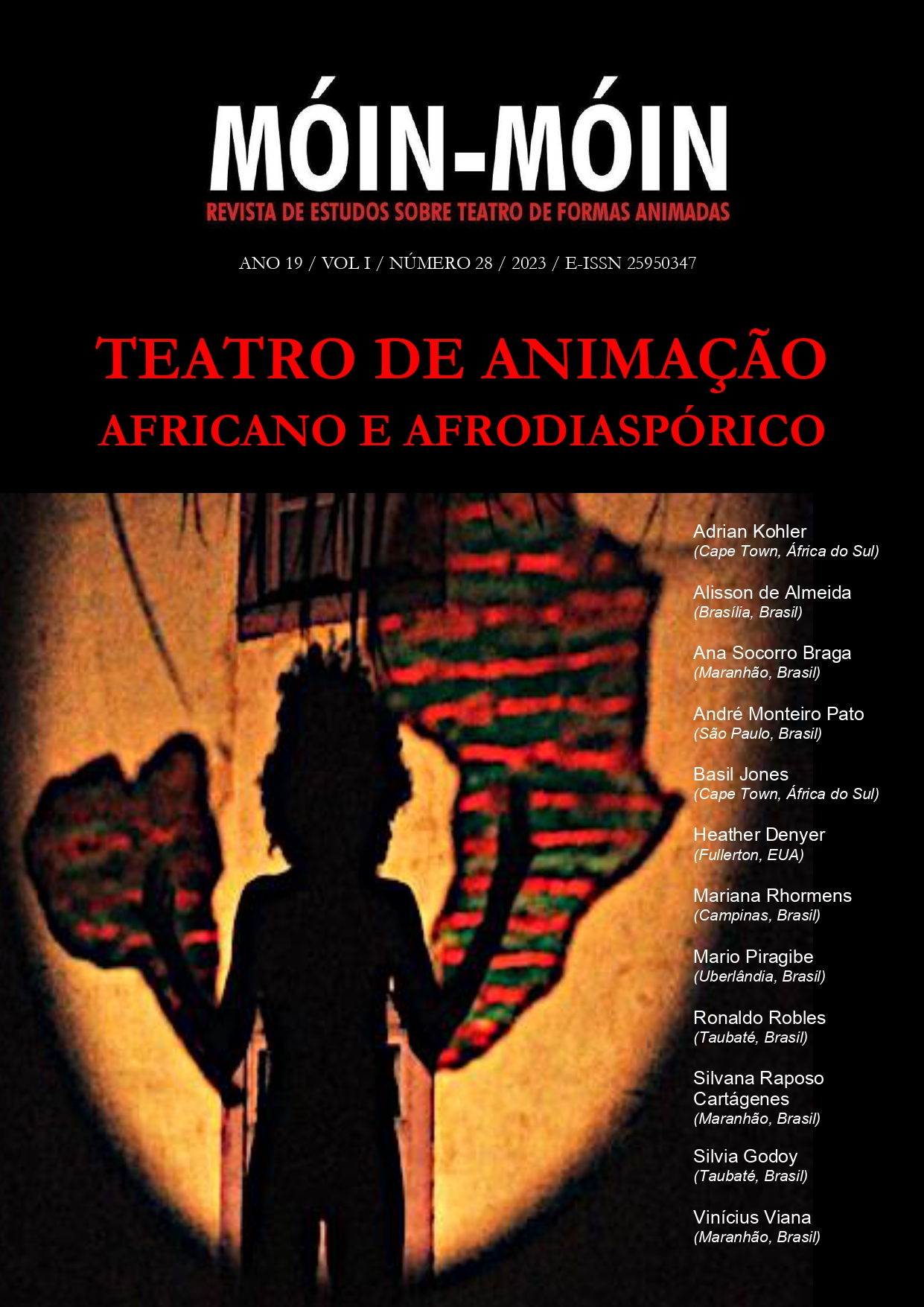Mapiko Mask from Mozambique: from land to stage
DOI:
https://doi.org/10.5965/2595034701282023047Keywords:
mask, Mozambique, Mapiko, African theater, ÁfricaAbstract
The article presents Mapiko masks from Mozambique and discusses the relationships that theater and dance groups establish with such a tradition in the current scenic context in the city of Maputo. Mapiko masks are traditional to the Makonde people who live in the north of Mozambique. Mapiko underwent several modifications and adaptations over the years, dialoguing with other ethnic groups, European colonial references and political and ideological transformations. This article presents such transformations and possibilities that such a mask has been assuming over the years, in order to discuss the relationship between tradition and contemporaneity in the use of masking influenced by Mapiko in the current scene of Maputo.
Downloads
References
BORTOLOT, Alexander. A Language for Change: Creativity and Power in Mozambican Makonde Masked Performance, circa 1900-2004. PhD Dissertation, Colombia University, 2007
DUARTE, R; GRAÇA, J. Máscaras. Sevilha: Catálogo Expo’92 Sevilha, 1992.
ISRAEL, Paolo. Mapiko masquerades of the Makonde: Performance and Historicity. Eastern African Contours: Reviewing Creativity and Visual Culture, 2005, p.1-25.
UN PONT. Île de la réunion (Saint-denis): édition d’artiste, dez. 2013, mar. 2014.
VAZ, Carlos. Para um conhecimento de teatro africano. Lisboa: Ulmeiro,1978.
OLIVEIRA, Anna Fresu Mendes de. Pesquisas para um teatro popular em Moçambique. Maputo: Cadernos tempos, 1982.
Documentário: “Kamimbangu – a cena moçambicana: entre tradição e contemporaneidade”. Direção: Mariana Rhormens. Produção: Simbiose Films. Brasil: São Paulo, 2019. Filme (DVD).
Downloads
Published
How to Cite
Issue
Section
License
Copyright (c) 2023 Móin-Móin Magazine - Studies in the Art of Puppetry

This work is licensed under a Creative Commons Attribution 4.0 International License.
The readers are free to transfer, print and use the articles published in the Magazine, as long as there’s explicit mention to the author(s) and to Móin-Móin Magazine - Studies in Theater of Animated Forms and there are no changes on the original work. Any other use of the texts needs to be approved by the author(s) and the Magazine. In submitting an article to Móin-Móin Magazine - Studies in Theater of Animated Forms and have it approved, the author(s) agree to give away, without payments, the following rights to the Magazine: first publishing rights and the license for the Magazine to redistribute this article and its metadata to index and reference services that the editors consider appropriate.
The articles whose author(s) are identified represent the author’s point of view and not the official position of Móin-Móin Magazine. The author(s) commit to always mention the publication in the following way when publishing work in reference to the article published in Móin-Móin Magazine:
“This article was originally published by Móin-Móin Magazine volume (insert the volume), number (insert the number), in the year of (insert year) and can be accessed on: http://www.revistas.udesc.br/index.php/móin"
Plagiarism in any way constitutes an unethical publishing behavior and is unacceptable. Móin-Móin Magazine holds the right to use software or other plagiarism tracking methods to scan the submitted works.
![]()
This journal uses Attribution-NonCommercial 4.0 International– (CC BY NC 4.0).






